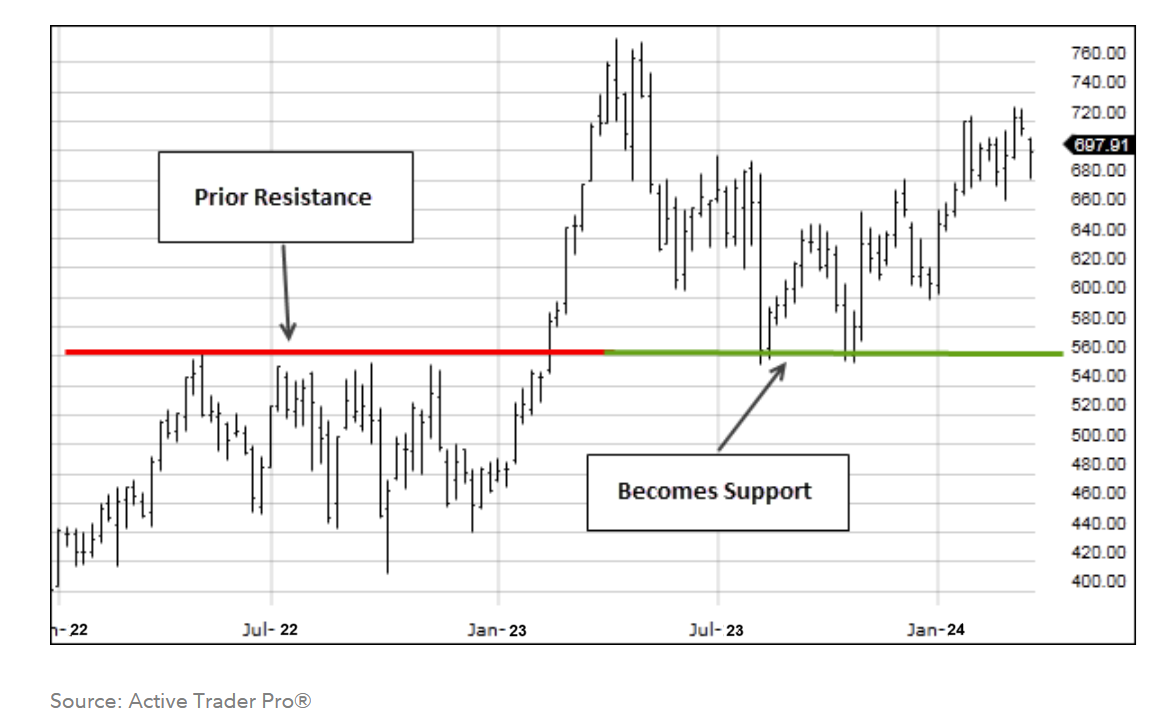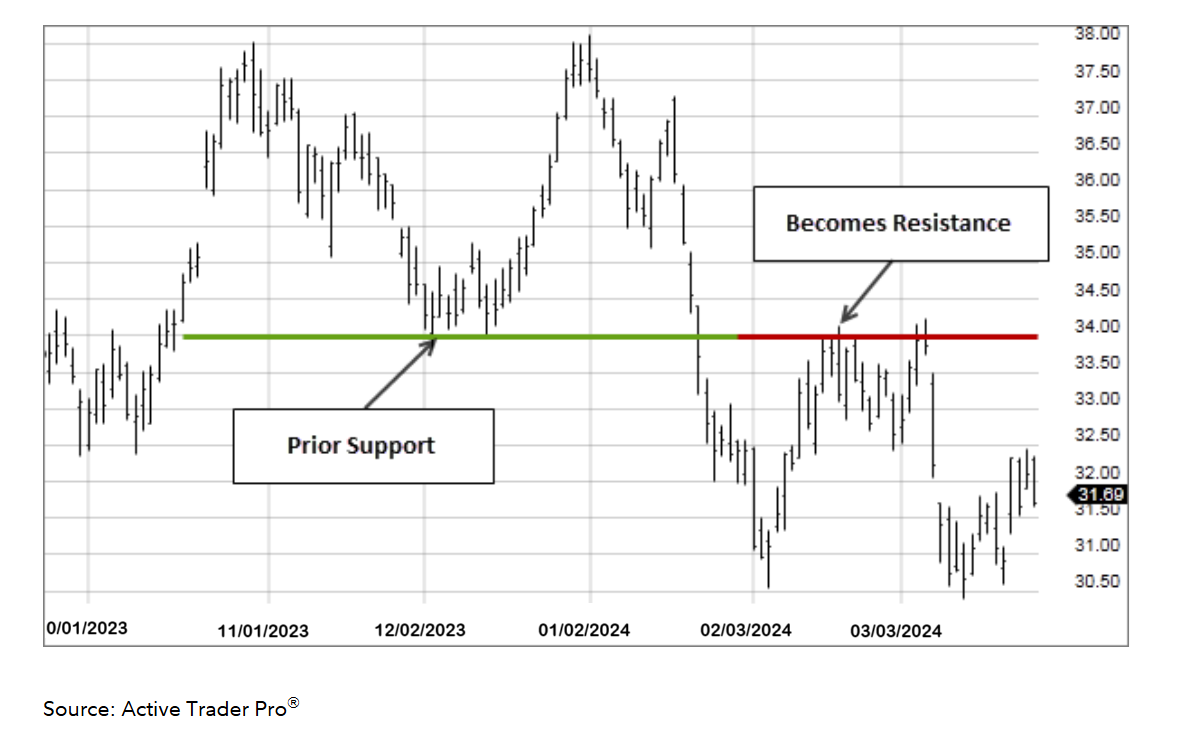Support and resistance levels are important points in time where the forces of supply and demand meet. These support and resistance levels are seen by technical analysts as crucial when determining market psychology and supply and demand. When these support or resistance levels are broken, the supply and demand forces that created these levels are assumed to have moved, in which case new levels of support and resistance will likely be established.

Support
Support is the level at which demand is strong enough to stop the stock from falling any further. In the image above you can see that each time the price reaches the support level, it has difficulty penetrating that level. The rationale is that as the price drops and approaches support, buyers (demand) become more inclined to buy and sellers (supply) become less willing to sell.
Resistance
Resistance is the level at which supply is strong enough to stop the stock from moving higher. In the image above you can see that each time the price reaches the resistance level, it has a hard time moving higher. The rationale is that as the price rises and approaches resistance, sellers (supply) become more inclined to sell and buyers (demand) become less willing to buy.
Psychology of support and resistance
Let’s use a few examples of market participants to explain the psychology behind support and resistance.
First let’s assume there are buyers who’ve been buying a stock close to a support area. Let’s say that support level is $50. They buy some stock at $50 and now it moves up and away from that level to $55. The buyers are happy and want to buy more stock at $50, but not $55. They decide if the price moves back down to $50, they will buy more. They’re creating demand at the $50 level.
Let’s take another group of investors. These are the people that were uncommitted. They were thinking about buying the stock at $50 but never “pulled the trigger.” Now the stock is at $55 and they regret not buying it. They decide that if it gets to $50 again, they will not make the same mistake and they will buy the stock this time. This creates potential demand.
The third group bought the stock below $50; let’s say they bought it at $40. When the stock got to $50, they sold their stock, only to watch it go to $55. Now they want to re-establish their long positions and want to buy it back at the same price they sold it, $50. They’ve changed their sentiment from sellers to buyers. They regret selling it and want to right that wrong. This creates more demand.
Now let’s change things up to help understand resistance. Take all the above participants and say they all own the stock at $50. Imagine yourself as one of the owners at $50. The stock goes to $55 and you don’t sell. Now the stock goes back to $50, where you own it. What are you feeling? Regret for not selling it at $55? Now it goes back to $55 and you sell as much as you can this time. So do the other owners of the stock. The stock can’t get past $55 and retreats. There are at least 3 groups of stock owners that are trying to sell their supply at $55. This creates a resistance level at $55.
These are just a few examples of many possible scenarios. If you’ve traded before, you’ve probably been through all of these scenarios and experienced the emotions and psychology behind them. You’re not alone. There are countless market participants going through the same emotions and thought processes as you, and this is what helps determine some of the market psychology behind support and resistance, and technical analysis in general.
Support and resistance role reversal
A key concept of technical analysis is that when a resistance or support level is broken, its role is reversed. If the price falls below a support level, that level will become resistance. If the price rises above a resistance level, it will often become support. As the price moves past a level of support or resistance, it is thought that supply and demand has shifted, causing the breached level to reverse its role.
Example of resistance becoming support

Example of support becoming resistance

Conclusion
Technical analysis is one approach of attempting to determine the future price of a security or market. Some investors may use fundamental analysis and technical analysis together; they’ll use fundamental analysis to determine what to buy and technical analysis to determine when to buy.
Don’t forget that technical analysis is not an exact science and it is subject to interpretation. If you continue your study of technical analysis, you’ll likely hear someone say it is more of an art than a science. As with any discipline, it takes work and dedication to become adept at it.


